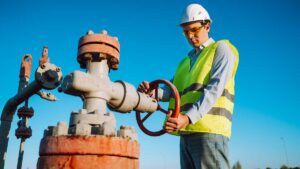Renewables surged in 2019 but new investment dived

2019 was another record year for renewable energy completions but political and regulatory wobbles meant new investment in the sector tanked.
There were 34 large-scale projects completed in 2019, which lifted Australia’s large-scale renewable energy capacity by 2.2 GW, according to the Clean Energy Council’s 2020 report.
Wind overtook hydro as the country’s largest clean energy source at 35 per cent of the total, as eight new farms added 837 megawatts (MW) of capacity.
Large scale solar saw 1416MW of new capacity added in 2019 across 27 projects, and rooftop solar added over 2 gigawatts (GW).
Almost a quarter of the country’s electricity supply came from renewable energy.
Clean Energy Council data shows Tasmania sourced 95.6 per cent of its power from renewable sources, mainly hydro, followed by South Australia with 52.1 per cent. Victoria had 23.9 per cent, in WA it was 20.9 per cent, NSW had 17.1 per cent and Queensland had 14.1 per cent.
Wobbles put future renewables at risk
But new investment commitments fell by more than 50 per cent from $10.7bn in 2018 to just $4.5bn in 2019.
Last year, the industry struggled with what the Clean Energy Council report called “growing pains” as regulations and transmission infrastructure failed to keep up with the rapid growth of renewable energy.
The report said transmission infrastructure weakness “was keenly felt in the West Murray region of Victoria and New South Wales” where a number of wind and solar farms had to curtail their output to maintain grid stability.
At the other end of the development pipeline contractors such as Downer EDI have been pulling out of renewable energy projects as risks mount.
Politics has also been a critical factor in reducing investment in the sector.
The Renewable Energy Target (RET), launched by the Howard government in 2001, ended last year and wasn’t replaced.
The federal government is still more focused on including old and new coal power plants in the energy mix than providing cross-sector support: last year it tried to open up funding from its Climate Solutions Fund to upgrade coal fired power plants, rather than new investment in renewables, a move which was rejected late last month by the Emissions Reduction Assurance Committee.
UNLOCK INSIGHTS
Discover the untold stories of emerging ASX stocks.
Daily news and expert analysis, it's free to subscribe.
By proceeding, you confirm you understand that we handle personal information in accordance with our Privacy Policy.








